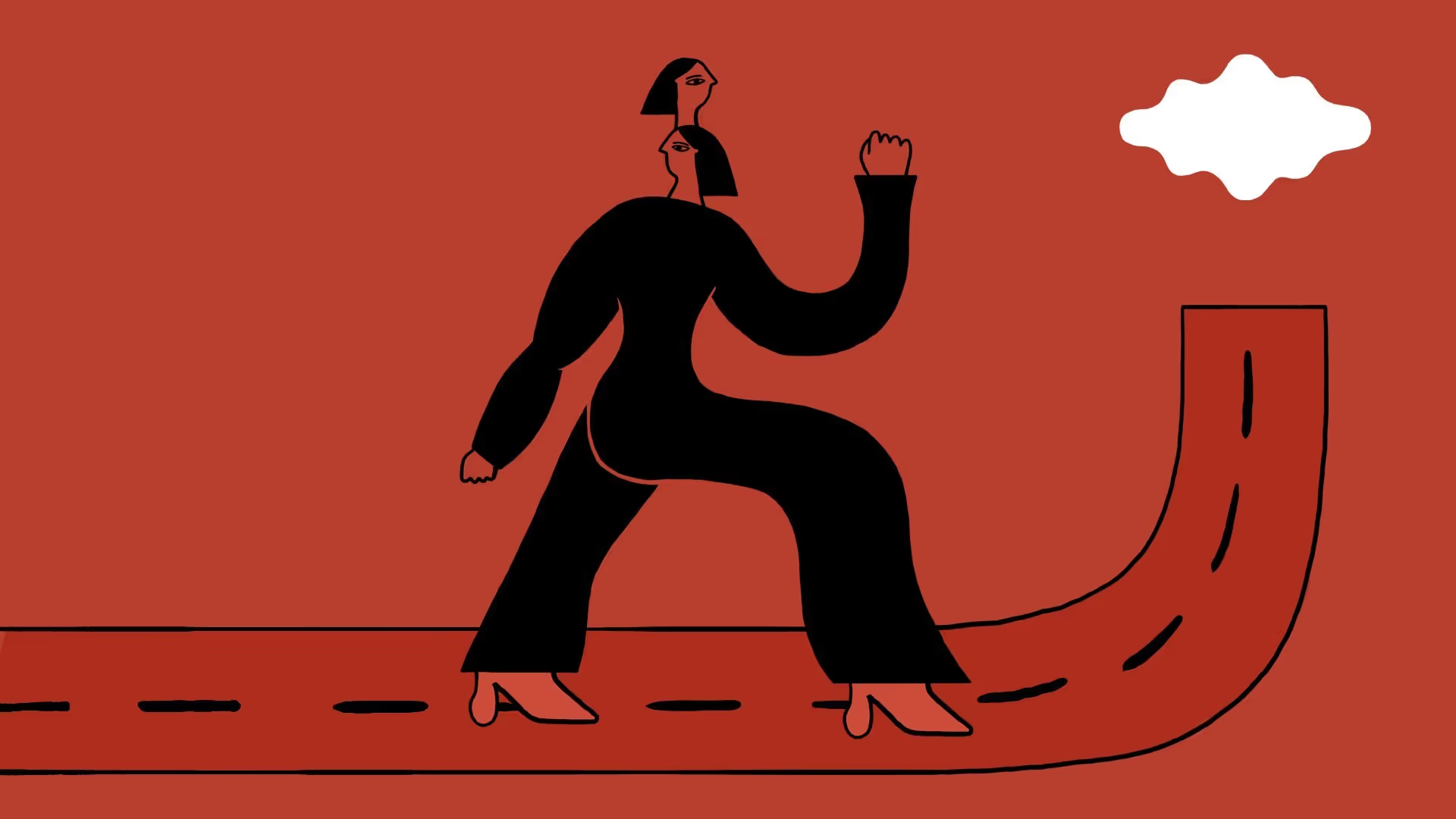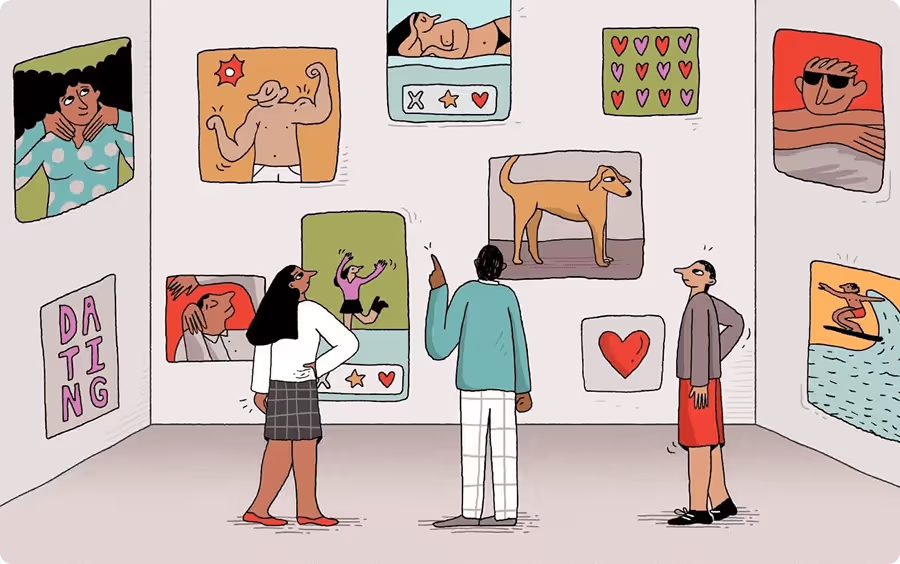Social distancing. Flatten the curve. Shelter at home. Three months ago, we had never even heard of these terms. Now, they’ve become defining features of our lives. We’ve embraced this vocabulary as a means of understanding this surreal period we’re living through. In our fight against a microscopic threat, this new lexicon gives us vivid imagery of ways to protect ourselves and survive.
It’s time we expand that lexicon of our physical health to include our mental health. The unprecedented crisis caused by the novel coronavirus has left us with an equally unprecedented set of unfamiliar emotions. High highs and low lows float atop a steady undercurrent of constant dread. Even when we allow ourselves to see the positive aspects of quarantine—the slowing down, the opportunity to reconnect with ourselves, our families, and our loved ones—we can’t help but feel this unbearable “thing” underneath it all. But what is it?
“It” isn’t any one thing. We have a tendency to call it “stress,” but it’s multi-dimensional. Breaking it down into parts—and giving those parts names—is crucial to our health, safety, and sanity. We’re not “working from home,” we’re trying to adapt to an entirely new worldview while working, learning, teaching, partnering, parenting, and more, on top of each other, in the midst of a global crisis. We’re not tired; we’re burned out. We’re not “waiting for things to return to normal,” we’re obsessing about what “normal” will even be after this. And for that matter, when is “after” going to come?
Prolonged Uncertainty
We’re dealing with Prolonged Uncertainty—the sense that, not only do we feel uncertain, we don’t know when our feeling of uncertainty will end. We wonder if we’ll be furloughed, face salary reductions, or lose our jobs (if we haven’t already). It was hard enough as a single mom on $28K/year. What now? And what will happen to the workers whom we depend on for food and resources? We dream about when we can safely leave our homes, see our loved ones and go back to the places that color our daily lives. We miss our favorite barista, our hairdresser, that waiter who always remembers us. Will we ever get to hold the person with whom we’ve been chatting on Hinge or Tinder? Will our businesses reopen? If we can’t sufficiently support the neighborhood joints we love, will they disappear? Can I take another day of teaching my kid when this style of learning doesn’t mesh well with them? Will the news ever give us a break? Will we ever stop being so paralyzed with fear and anxiety?
Ambiguous Loss
This is loss on a massive, ubiquitous scale. But it’s not simply “I had X and now it’s gone,” it’s Ambiguous Loss, the sense that we have lost so many intangible elements of our normal lives that we can hardly identify what we’re missing. My colleague Pauline Boss coined this term to describe situations in which we’ve lost a loved one mentally but not physically, like Alzheimers, or vise versa, like deployment. Right now, the Ambiguous Loss is cumulative. It’s a loss of the way we have lived; the boundaries between work, home, school, and more; our plans, weddings, trips, birthday parties; and a loss of safety and trust in our leadership. And because it is ambiguous, it is difficult to know what we are mourning. Grief expert David Kessler has described this as “the loss of normalcy; the fear of economic toll; the loss of connection,” and says that “we are not used to this kind of collective grief in the air.”
Anticipatory Grief
Tragically, many of us are grieving the loss of loved ones who we couldn’t touch or even be near at the end. Heroic doctors and nurses have taken on an additional burden—facilitating video chats between patients and their families so they can say goodbye. Death doulas like Sierra Campbell are conducting funerals on Zoom, which may be the first time that funerals are actually recorded and can be rewatched. Many others are experiencing Anticipatory Grief, the realization that we could lose our loved ones. For those of us alone in quarantine, we’re grieving the loss of all direct human connection. And those of us who have lived with too much neglect and loneliness are being triggered again and losing hope that we won’t always need to be so self-reliant.
Stress
All of these feelings live inside the catch-all term of “Stress.” As Dr. Elissa Epel, a stress scientist and Professor and Vice Chair of adult psychology in the Department of Psychiatry, at UC San Francisco, explains: stress is really sadness, helplessness, despair, and grief. After weeks in quarantine, we know that all of the many emotions that comprise our Prolonged Uncertainty, Ambiguous Loss, and Anticipatory Grief are always looking for a place to land. Sometimes we dump our emotional load on the people who are right next to us. And we know that’s not helping anyone.
Who Copes Well in Crisis?
Surprise: it’s not those who always look on the bright side, as explained in a recent New York Times Op-Ed by Emily Esfahani Smith. It’s those who cultivate an attitude of Tragic Optimism, a term coined by Viktor Frankl, a Holocaust survivor and psychiatrist from Vienna, which refers to the ability to maintain hope and find meaning in crisis. UNC Charlotte’s Lawrence Calhoun uses the term Post-Traumatic Growth to describe the best possible outcome of engaging in Tragic Optimism. Positive psychology calls this Benefit Finding, but I like how Mr. Frankl described it: “the human capacity to creatively turn life’s negative aspects into something positive or constructive.”
If we can cultivate Tragic Optimism, we have a chance to experience Post-Traumatic Growth. And if we do it together, we can become Collectively Resilient. Similar to post-9/11, this is a time when many of us who’ve been raised on the idea of self-reliance and self-control are actually realizing that we are interdependent and in need of support. This is a time for Mass Mutual Reliance.
So What Can We Do About It?
The first step in stress-regulation is our ability to identify and articulate our feelings, whether it’s to ourselves, our diaries, or our loved ones.
- Don’t just say “I’m stressed!” Try to put your feelings into words.
- Otherwise it makes you more stressed and contributes to a state of Empathic Distress—if you are not aware and accepting of your own feelings, then you won’t connect with the feelings of the people around you. You may even shut them down because you don’t allow your own.
- Identify your stress triggers and check in with each emotion: guilt, shame, helplessness, despair, irritation, anger, inadequacy, confusion, disconnection, loneliness, ambivalence—as well as gratitude, love, respect, and compassion.
Do small, rapid interventions.
- Pay attention to what you’re paying attention to: news, arguments, and otherwise.
- Get outside the best you can.
- Short term strategies start in your body; a bodied-up ritual involving breathing and stretching will help you relax and restore.
- Reassure yourself that you are okay right now.
- Focus on one breath at a time.
- Know that thriving doesn’t always mean being productive.
Resist advice to only be forward-looking.
- Now is a time to look back at the stories that have been passed on in our families and cultures that deal with adversity and triumph.
- This is not the first time we have risen to meet the challenge.
- Some of us have grown up with chaos and loss and are finding that we’re well-prepared for this moment. (A friend told me that she can finally be proud of her OCD, the perfect character structure for this occasion.)
Share these stories and seek them out.
- Check on each other. Who has reached out to you out of the blue recently? Whom have you reached out to?
- Organize or join a meaningful group. Virtual groups are keeping us social, active, accountable, and are an incredible shared resource. Parents should talk to other parents. Children should talk to other children. Alcoholics Anonymous and AA have great free groups online, as does the mens’ group EVRYMAN.
- Start a Zoom yoga group, film club, or whatever else you’re into.
- And check out my resources list for groups, helpful articles, and free virtual events.
- Call people while you’re cooking, walking, or even taking a bath. That’s what happens in normal life. Leave the camera on while you clean. We love when people stand in the kitchen to keep us company while we cook and clean. We don’t have to give that up.
Volunteer.
- Nothing can take us out of our depression, guilt, or boredom like helping others. It gives us a sense of purpose. Just look around you.
- Who needs a latex-glove covered helping hand?
- There are tons of organizations that need your help virtually.
Make Advanced Care Plans, Funerals, and Memorials.
- One of the important things I’ve done recently with my husband and sons is to not just talk about other people dying, but to bring the conversation into our own family.
- We’ve been working with Sierra Campbell at Nurture.co to have critical conversations about advanced care directives and end of life planning. (Believe it or not, this was our Sunday brunch.)
- This may seem scary but having a plan is going to help you with the many feelings you’re experiencing. Because it creates structure, you may find it surprisingly calming.
You may wake up tomorrow with a brand new feeling, a heightened anxiety or even a heightened hopefulness. You can be five years old, home from school indefinitely, or fifty years old, navigating the technological challenges that spring up when our whole world has moved online. No matter our age or stage, when our mental state feels unfamiliar, we feel out of control. Do your pulse checks. Get in your body. Identify what you’re feeling. Communicate with your loved ones. Reach out to strangers. Respond. And don’t forget to breathe. We’re all taking it day by day.




.svg)





